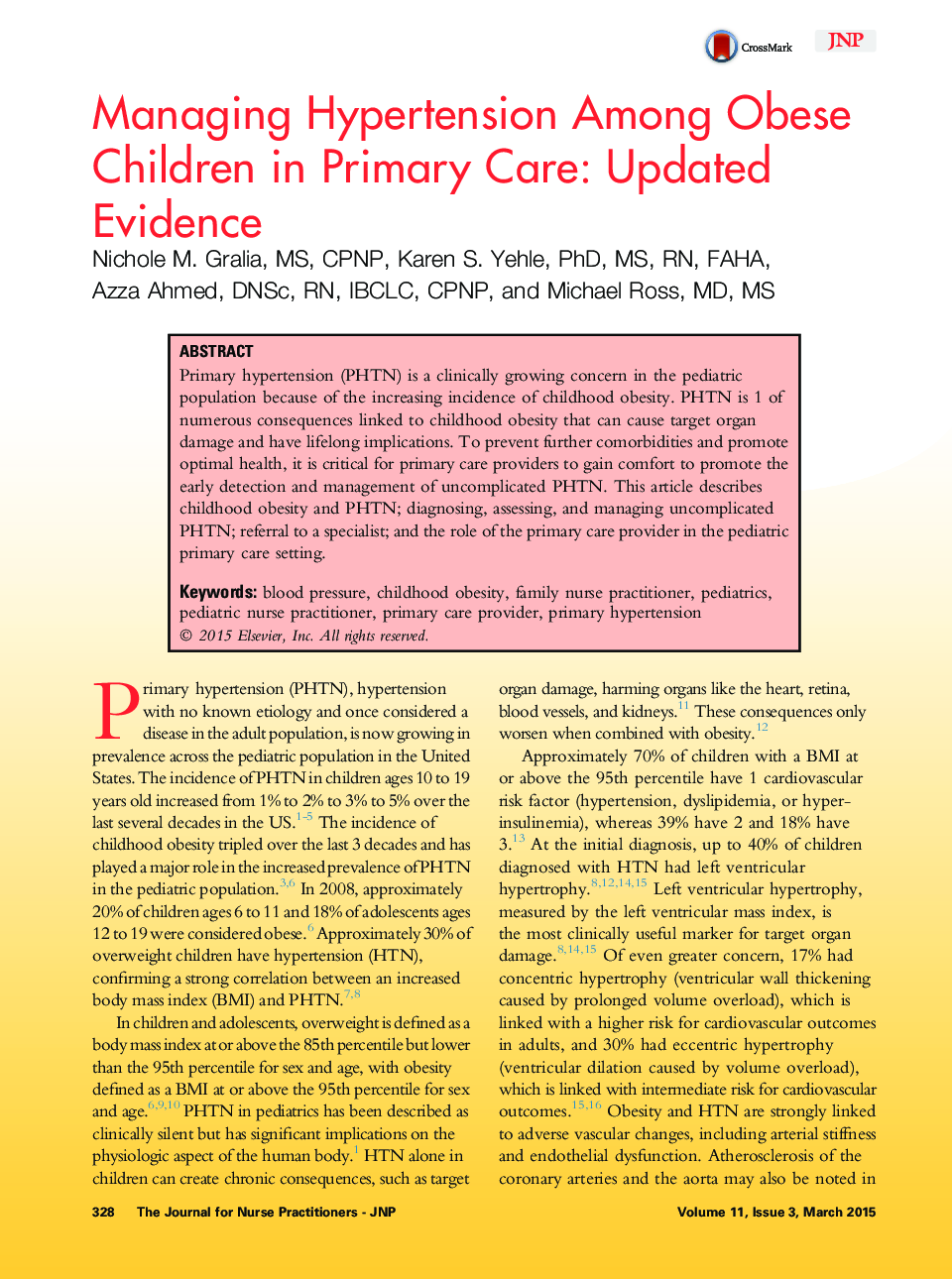| Article ID | Journal | Published Year | Pages | File Type |
|---|---|---|---|---|
| 2660404 | The Journal for Nurse Practitioners | 2015 | 7 Pages |
•Primary Care Providers need know the warning signs of an elevated blood pressure and act early to prevent primary hypertension in children.•Accurate blood pressure values are crucial in the diagnosis of hypertension in children.•Accurate blood pressure in children is measured using auscultation.•Diet and exercise should be part of the treatment plan, as there is a more positive outcome on body mass index when they are combined.•Initial pharmacological therapy may be based on the medication’s side effect profile, risk of compliancy, or familiarity to family.
Primary hypertension (PHTN) is a clinically growing concern in the pediatric population because of the increasing incidence of childhood obesity. PHTN is 1 of numerous consequences linked to childhood obesity that can cause target organ damage and have lifelong implications. To prevent further comorbidities and promote optimal health, it is critical for primary care providers to gain comfort to promote the early detection and management of uncomplicated PHTN. This article describes childhood obesity and PHTN; diagnosing, assessing, and managing uncomplicated PHTN; referral to a specialist; and the role of the primary care provider in the pediatric primary care setting.
